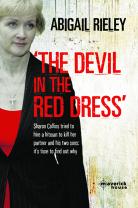“Because they should know better…”
That’s what I was told when, as a young journalist, I asked why it was always bigger news when a crime was committed by someone in a white collar job. I never liked that answer. Let’s leave aside the fact that it assumes that anyone from a less privileged position in society doesn’t or can’t know that committing a crime is wrong, I just don’t think it’s the whole story.
Human beings as a species are naturally nosy. Maybe it grew up as a survival strategy, maybe it’s just one of our baser instincts, whatever the reason, there is a slightly sinful enjoyment to be had from peering into someone else’s life. Look at the success of reality television. Social media means we can stalk our nearest and dearest, not to mention people we haven’t seen since school or who we met briefly once long ago, like never before. But for proper Grade-A snooping, with added moral vindication, you really can’t beat the criminal courts.
When you’re reporting a trial there is a checklist you follow to find that perfect case. A perfect case, especially if you are a freelancer, is a story that will get you “above the fold”. A story that will have good enough quotes that they will appear as a “standfirst” in larger type at the top of your piece. A story with a strong enough hook that you’ll get a nice large headline and maybe a picture byline. A story that lends itself to pictures. A trial with a white collar criminal or a murder with a beautiful or heartbreakingly pathetic corpse tends to tick all the boxes. Add a sexual element, in murder at least, and you can guarantee the press benches will be full and it’ll be standing room only in the courtroom.
I’ve written about these kinds of trials for almost half my career. I wrote two books because the public appetite for these cases meant there was a market for them. I earned my living out from knowing which trials would generate the column inches, noting details when a death was announced, keeping an ear out for court dates, having the research ready. A big trial would mean more money, would mean the camaraderie of a large press posse following every move, could even lead to a book deal or a movie deal. A big trial would be a pay out.
But at the same time you tend to see the worst of people during a big trial. The rubber neckers who turn up every day, rubbing their hands with glee at the juicier evidence. The neighbours who’d grab you for the gruesome details. The callous jokes you hear yourself cracking at lunchtime with colleagues. Even though it was how I made my living, even though I shared the interest, the lack of empathy bothered me and became something I didn’t want to feed any more.
When we look at a white collar accused we do so with smugness. They should have known better than to be there, therefore we can freely judge them. They have transgressed, have let the side down – we are absolved from pity. All too often this condemnation is extended to the victim. If the victim can also be seen to have failed morally in some way, then the way is clear to enjoy the gory details without being hampered by compassion. I can only imagine how the family of Elaine O’Hara are feeling this week as architect Graham Dwyer is on trial for her murder in a trial that is generating daily headlines about bondage and sadomasochism. Reading the headlines it’s sometimes hard to tell who’s on trial. Whatever the verdict at the end of the trial, Elaine O’Hara will be remembered by many because of her supposed sexual preferences rather than because of the facts, such as they are known, of her death.
I’m currently researching middle class crime in the 19th century for an academic paper – looking at the very early days of court reporting. I knew from researching the Ireland’s Eye murder that some things never change when it comes to the kind of trials that make the headlines but it’s fascinating to see how court reporting evolved in the early 19th century. Newspapers have never been free of the commercial need to draw in more readers. They’ve always had to “tickle the public”. There was never a time when sex didn’t sell, even when it couldn’t be mentioned. The trials that are remembered today, that inspired songs and plays back then – like the murder of Maria Marten by William Corder, the famous Red Barn murder of 1827 – would still make headlines. Some things never change.

